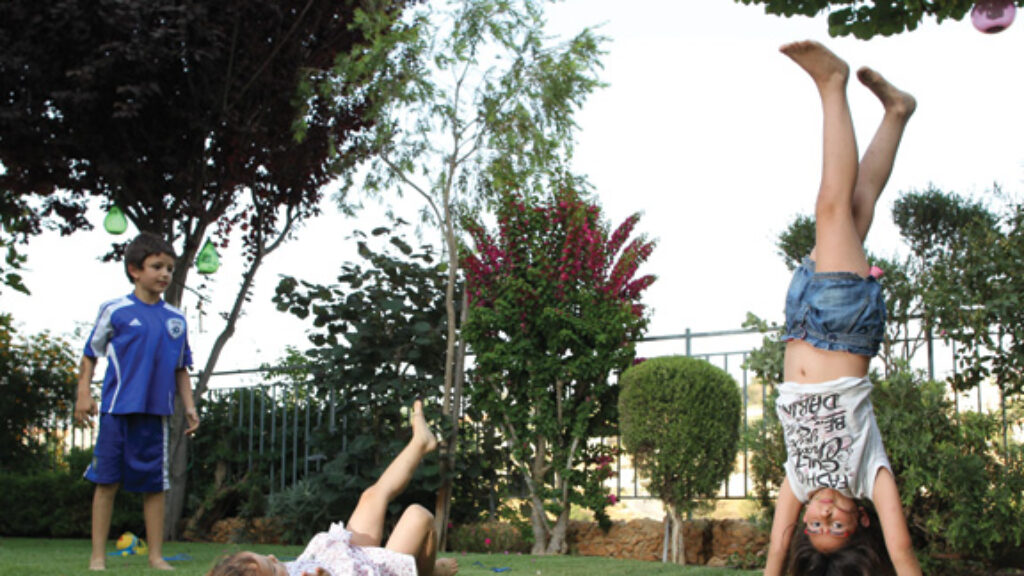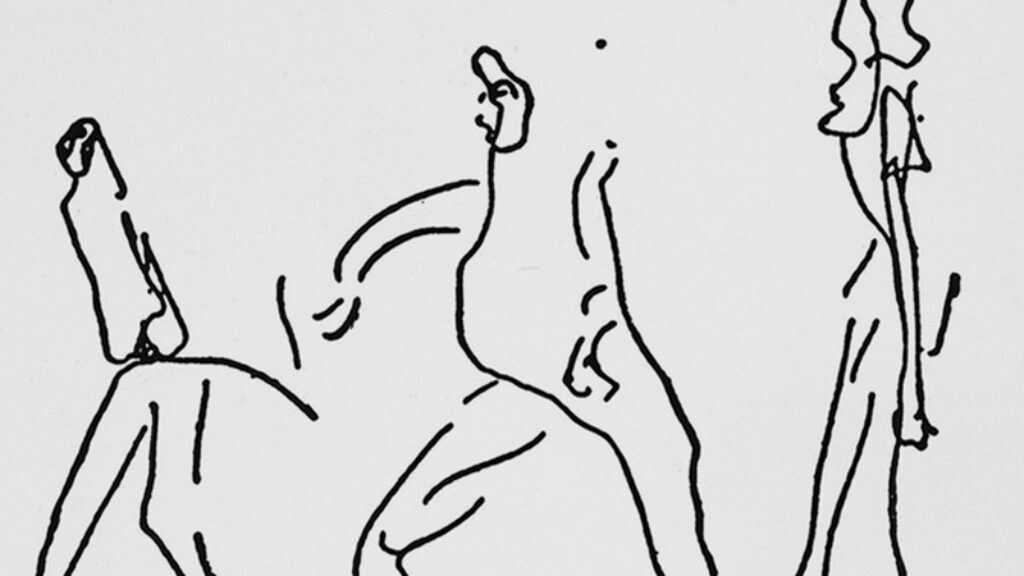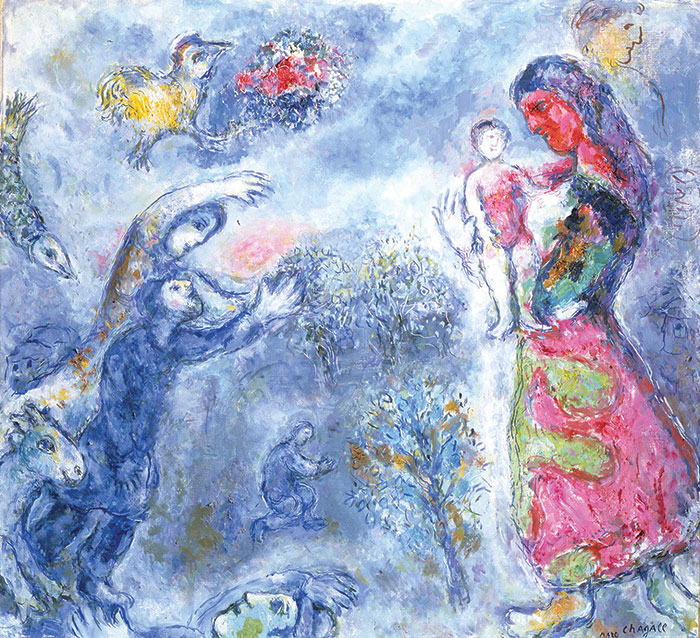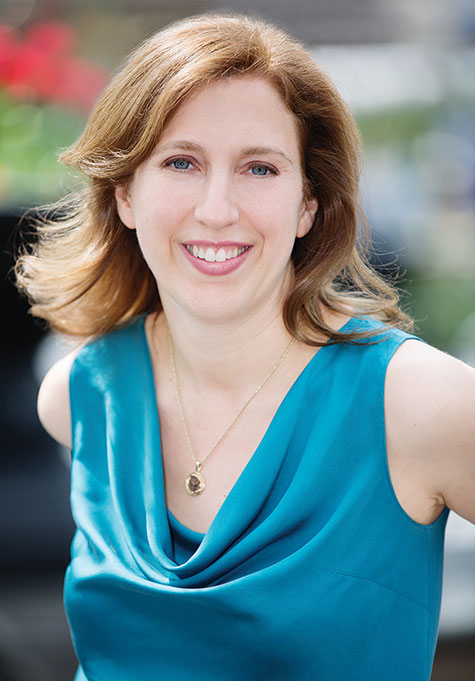Rachel and Her Children
One way of telling the story of rabbinic Judaism is to say that it was born in a conversation between Rabbi Yochanan ben Zakkai and the Roman general Vespasian, in the shadow of a besieged Jerusalem. Rabbi Yochanan had feigned death in order to be smuggled out of the walled city in a coffin despite the opposition of the Jewish zealots, who were not interested in negotiations with the enemy. Vespasian, impressed by Rabbi Yochanan’s bravery and his prediction that Vespasian would eventually become emperor of Rome, asked him what he wanted. Rabbi Yochanan’s famous answer was “give me Yavneh and its [Torah] sages,” thus establishing a center of Jewish learning independent of the Holy Temple in Jerusalem. Rabbi Yochanan’s foresight transformed the brick-and-mortar reality of a Temple-centered Judaism into the port- able diaspora-ready religion with which we are familiar, and thus granted a powerful second wind to a Jewish nation that might have been otherwise brought to its knees by Roman oppression.
Dara Horn’s mind- bending new novel, Eternal Life, takes place from the perspective of Rabbi Yochanan ben Zakkai’s heretofore unknown mother Rachel. Rachel embodies a gruelingly literal interpretation of Rabbi Yochanan’s lofty project. Like a Judaism that endures beyond destruction, Rachel cannot die because of a vow she took at the Temple in order to save an ailing Yochanan. With the Temple’s destruction she is left in this liminal state, along with her lover, Elazar ben Haninah, the son of the high priest and the child’s real father. The novel, and Rachel and Elazar’s occasionally intersecting lives, span the centuries between Second Temple Jerusalem and modern-day New York.
Eternal Life is Horn’s fifth novel, and like her others it crosses time and place to tell a transfixing, multilayered story that draws on Jewish texts and themes in a deep, witty, and immensely readable fashion. In discussing her work, Horn has expressed a desire to transform English into a “Jewish language.” Each of her novels has been an attempt to create American literature that is not just incidentally Jewish but in its very texture channels the cadences and concerns of classical Hebrew and Yiddish. It may well be an impossible goal, but Eternal Life comes awfully close to realizing it, with its seamless incorporation of translated biblical verses and rabbinic phrases into its lively narrative: “If all the heavens were parchment, and all the seas ink, such would not suffice to record the days of Rachel, whose years are no more than an eyeblink in the Master of the World.”
In addition to Eternal Life’s profound meditations upon Judaism, time, and history, it is also a novel about motherhood. The perils of actually achieving immortality have been explored to great effect before: from Gulliver’s Travels to Tuck Everlasting and even modern vampire fiction. But Horn is one of few authors, if any, who has made it her central concern to think through what it would mean for an immortal parent to bear mortal children. Rachel, the Jewish mother par excellence, raises dozens of children and has numerous families over the years. With this abundance comes a perpetual state of loss: “It sometimes seemed to Rachel that her descendants surrounded her, that by now she had populated the world. Except that so many of them had died. Again and again and again.” Recalling the biblical matriarch Rachel who perpetually weeps over her children, Horn’s Rachel is burdened by her responsibilities to others in a way that is almost unbearable: “The sacrifice was bottomless, heavy labor cast into a void.” Elazar urges Rachel to stop having children partly in order to stave off these negative feelings (and partly because he is her eternally irresponsible and infuriating lover), yet Rachel will not. She understands that her life has purpose precisely because of her obligations to others, and regardless of the agonizing discoveries that these obligations bring:
New parents think of each day as a cascade of beginnings . . . But old parents like her saw only endings: the last time she crawled, the last time she spoke in a pure raw sound unsculpted into the words of others, the last time she stood before the world in braids and laughed when she shouldn’t have, not knowing. Each child died before the person did, a small rehearsal for the future.
Rachel’s eternal state of motherhood and mourning does not dull her affection; rather it brings her sensitivity and powers of observation to greater and almost transcendent heights. Despite the hundreds upon hundreds of consecutive child-rearing years, Rachel never forgot a child.
In framing Jewish historical experience through the perspective of a parent, Horn also suggests a theological analogy for the relationship between God and the Jewish people as it manifests itself in the Bible and beyond. While Rachel remains baffled by an unknowable God, she becomes somewhat God-like in her position of infinite empathy for Jewish suffering despite her position of immunity. In the dysfunctional and unhealthily protracted, yet also oddly moving, relationship between Rachel and Elazar, there is also a subtle theological undercurrent. The prophet Hosea suggests that the relationship between God and Israel is like a marriage: “I will betroth you to me forever.” Rachel and Elazar dramatize what such a never-ending relationship might actually look like—for better and for worse.
Over the centuries Rachel and Elazar watch children who suffer and die horribly under the Romans, during the Inquisition, in Russian pogroms, and in Nazi gas chambers. Sometimes, of course, they die of natural or accidental causes, but in some of those cases their parents are painfully at fault. Their children not only suffer because of history; they suffer because they are Rachel and Elazar’s children, something neither parent is able to forget.
Horn has traversed some of this thematic ground before. In past novels she jolted her reader out of a potentially complacent understanding of the facts of Jewish history through the use of viscerally moving fictional episodes. In The World to Come, the dramatic weight of the Soviet oppression of its Jews comes to bear in a cramped apartment in Moscow, where a loving father is pointlessly torn away from his wife and daughter. In this novel, Horn paints the years leading up to the Roman destruction of Jerusalem with vivid, perfectly chosen vignettes: a closely averted altercation with some Roman guards, a hapless Jewish zealot who is caught up in something that is beyond him, the fleeting glimpse of a captured and bound daughter who awaits her fate in Rome’s human marketplace.
In this sense, Horn’s work is both comparable to and very different from other Jewish historical fiction such as Alice Hoffman’s depiction of Masada on the eve of its destruction in The Dovekeepers, or Milton Steinberg’s famous tale of the mishnaic anti-hero Elisha ben Abuya in As a Driven Leaf. The breathy love scenes between the recently immersed Rachel and the young priest Elazar may even invite comparison to the interweaving of purity and Eros in Anita Diamant’s steamy, ahistorical biblical romance The Red Tent. Like Horn, each of these writers created engaging works of historical fiction, albeit with lesser literary sparkle. But Steinberg, Diamant, and Hoffman engage the Jewish past through alternative histories: Steinberg pays homage to the heretical questioner the Rabbis tried to suppress; Hoffman introduces us to the fictive, gentle souls who would have averted the carnage at Masada; and Diamant reveals what she understands to be the pagan influences and religious syncretism that are stifled by the biblical account. Horn, on the other hand, is interested in “the story” itself, not an alternative narrative driven by a contemporary agenda. Her characters may be mischievous or impious, but she does not seek to upend tradition; she seeks to understand it and bring it to life.
If there is one novel Eternal Life is most reminiscent of, it is Horn’s previous novel, A Guide for the Perplexed, which traverses the book of Genesis, the medieval world of Maimonides, the 19th-century discovery of the Cairo Geniza, and post-revolution modern Egypt. Both A Guide for the Perplexed and Eternal Life are intrigued by, of all things, data collection and storage. A Guide for the Perplexed meditates on the possibility of full memory recall, both in a single person’s life and for a larger culture, and the narrator is a successful software developer who develops an app for that. In Eternal Life, Rachel’s 68th son Rocky has a similarly grandiose quest to create an unbreachable Internet “blockchain” where all of one’s past transactions can be effortlessly recorded:
It’s like a ledger, basically the record of every transaction that’s ever happened in the system. It’s a permanent record of the past that can never change, and it happens without trusting anyone at all.
The parallel between this description of the basis of cryptocurrency and Rachel herself, who has been set adrift to witness the passage of centuries without any end in sight, is not hard to detect. Although it moves briskly and is not terribly long, there are countless subplots, both individual and national, alluded to in Eternal Life. This too is part of the ken of the novel—the layers of stories that compose a tradition and the importance of preserving this meta-story even when, as in the case of Rabbi Yochanan, it may have come at a great cost.
Throughout the novel, Horn embraces the possibilities of cutting-edge technologies, both real and fictional, to illuminate timeless concerns. She does this in a manner that is somehow consonant with the traditional sensibility of the novel. Eternal Life entertains us with extended Twitter conversations, social media trolling, and hashtags (her original proposed title was #EternalLife). Sometimes these detract from the sublime “music of an unknown world” that is detectable elsewhere in the novel. But the jarring juxtaposition is also part of the point. After all, Rachel keeps living.
Moreover, the reality that Rabbi Yochanan constructed through the transformation of Temple-based Judaism into rabbinic Judaism was a kind of “virtual reality.” In Horn’s words, “He had been the first one to replace the real with the virtual, the one who turned two thousand years of otherworldly power into a metaphor.” At one point Rachel meditates in a somewhat gratingly Malcolm Gladwell–esque manner on Yochanan’s cutting-edge disposition: “Those future-facing children, Rachel knew, were the most insufferable of all children—disrespectful, arrogant, dismissive, ungrateful, impossible to raise. Worst of all, they were invariably, right.”
Rachel, unlike her son Yochanan, has trouble disconnecting from the past. Everywhere she looks, she sees the luminous Temple gleaming in the distance. When she returns to Jerusalem for the first time after its destruction in 70 C.E. on a visit with her family shortly after the Six-Day War, Rachel crumples “into hysterical, gagging, wrenching sobs. To be so close, and to still be trapped!” She desperately wants to be freed from the yoke of life into the world to come, or anything really. Rachel has had and seen enough suffering. Yet her agony here also evokes a larger Jewish pain, one that desperately yearns for the construction of the Temple in Jerusalem, even despite, or perhaps due to, the brilliance of the rabbinic tradition. Yochanan’s forward and Rachel’s backward visions vie with each other on the pages of the novel, and this tension is reflected in the structure and even the very language of the book itself.
Parenthood, Judaism, and even the novel itself are places where past and future meet and reveal their interdependence. In this way, the elaborate fictional conceit of Eternal Life reveals something we could have, or should have, known all along.
Suggested Reading
It Is Either Serious or It Isn’t
A poem by Chana Bloch is like a stone thrown deep into the well of experience.
State and Counterstate
Debates about Zion and its relation to the diaspora aren't new. David Myers and Noam Pianko have retrieved the forgotten ideas of several interesting figures, foremost among them Simon Rawidowicz. Do they speak to us now?

Reader, I Adopted Him
Maya Arad's latest work is minor literature in the sense that Jane Austen—a model for Arad—is minor because she focuses on human character rather than on the Napoleonic wars and the religious crisis of the Enlightenment.

Nothing but Literature
Kafka’s unabridged diaries are, for the first time, available in English. What do they teach us about a man who was a lacuna of himself?


Comments
You must log in to comment Log In